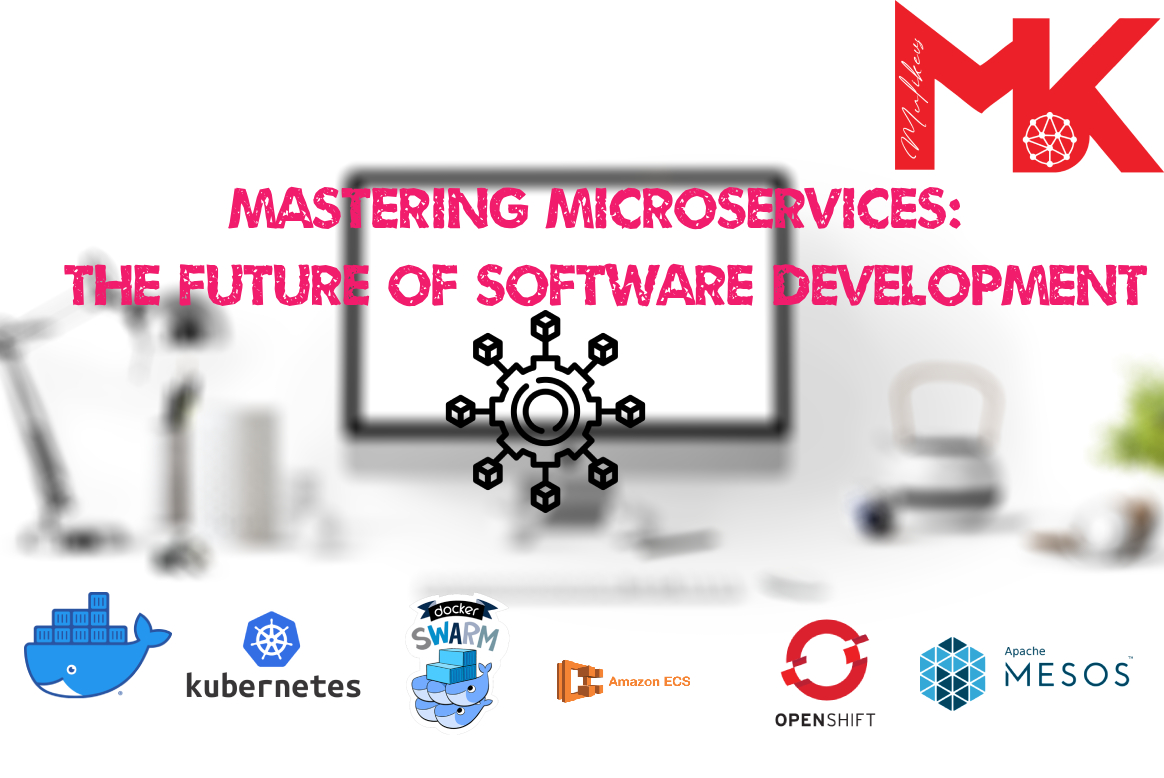Mastering Microservices: The Future of Software Development.
Microservices
Mastering Microservices: The Future of Software Development.
Introduction
Microservices architecture is a revolutionary approach to software development that is rapidly gaining popularity. By breaking down complex applications into smaller, independent services, microservices offer a number of advantages over traditional monolithic architectures, including scalability, agility, and technology heterogeneity.
In this blog, we will explore the basics of microservices architecture, including the advantages and disadvantages of this approach. We will also discuss how to implement microservices using different technologies and frameworks, and how to use containers and orchestration to manage microservices.
Whether you are a software developer who is new to microservices or an experienced developer who is looking to learn more about this emerging technology, this blog is for you.
Here are some of the key benefits of microservices architecture:
- Scalability: Microservices enable individual components to scale independently, allowing applications to adapt seamlessly to varying workloads and optimize resource utilization.
- Agility: Development teams can work independently on separate services in microservices architecture, leading to faster development, updates, and deployments without affecting the entire application.
- Technology Heterogeneity: Microservices offer the flexibility to use different technologies and frameworks for each service, catering to specific requirements and fostering innovation.
- Fault Isolation: The isolation of microservices limits the impact of failures to individual services, enhancing system resilience and reducing the risk of complete application downtime.
- Easy Maintenance: Smaller codebases and clear service boundaries make microservices easier to maintain, update, and understand, leading to improved overall system maintainability.
Disadvantages of Microservices
- Distributed System Complexity: Managing a distributed system introduces complexities in communication, data consistency, and eventual consistency, which require careful planning and design.
- Operational Overhead: The management and operation of microservices can be more complex, necessitating separate deployment, monitoring, and scaling of each service.
- Service Discovery and Communication: Microservices need to discover and communicate with each other, requiring mechanisms for service discovery and inter-service communication.
- Network Latency: Communication between microservices over the network can introduce increased network latency compared to in-process communication in monolithic architectures.
Microservices implementations and orchestration
Microservices are a popular architectural style for building modern applications. They offer a number of advantages over traditional monolithic architectures, including scalability, agility, and technology heterogeneity.
Microservices can be implemented using a variety of different technologies and frameworks. Here are some popular choices for each language:
- Python: Flask and Django are two popular Python frameworks for implementing microservices. Flask is a lightweight framework that is well-suited for smaller services, while Django is a more comprehensive framework that can be used for larger microservices.
- Java: Spring Boot is a popular Java framework for implementing microservices. It provides a robust set of features for building microservices, including support for RESTful APIs, dependency injection, and auto-configuration.
- PHP: Laravel and Lumen are two popular PHP frameworks for implementing microservices. Laravel is a feature-rich framework that offers a wide range of features, while Lumen is a lightweight framework that is well-suited for microservices that need to be scalable and efficient.
- Ruby on Rails: Ruby on Rails is a popular Ruby framework for implementing microservices. It is known for its convention-over-configuration approach, which makes it easy to develop microservices.
- JavaScript: Node.js is a popular choice for microservices in JavaScript. Express.js is a minimalistic web framework that is often used in conjunction with Node.js to build scalable and efficient services.
- C#: .NET Core is a versatile framework for implementing microservices in C#. It provides a range of tools and libraries for building high-performance and reliable services.
Once microservices have been implemented, they need to be orchestrated to ensure that they work together effectively. Orchestration tools play a vital role in managing microservices at scale. Some popular orchestration tools include Kubernetes, OpenShift, Apache Mesos, Nomad, Microsoft Azure Service Fabric, Google Cloud Run, AWS Fargate, Docker Swarm, and Amazon ECS.
These tools handle deployment, scaling, load balancing, service discovery, and automated updates. They make it possible to manage microservices at scale and ensure that they are always available and performing as expected.
Containers and orchestration
Containers and orchestration are essential for microservices applications. Containers provide a way to package and deploy microservices, while orchestration tools help to manage and automate the deployment, scaling, and management of microservices.
By using containers and orchestration, developers can build microservices applications that are scalable, efficient, and easy to manage.
Here are some of the benefits of using containers and orchestration for microservices:
- Scalability: Containers can be easily scaled up or down, which makes it easy to meet the changing demands of microservices applications.
- Efficiency: Containers are lightweight and efficient, which makes them ideal for microservices applications that need to be scalable and cost-effective.
- Ease of management: Orchestration tools help to automate the deployment, scaling, and management of microservices, which makes it easier for developers to manage microservices applications.
Conclusion
Microservices offer a powerful approach to building modern, scalable, and maintainable applications. By embracing microservices with various technologies and frameworks, developers can choose the best tools for specific project needs. When combined with containerization using technologies like Docker and orchestrated with platforms like Kubernetes or Docker Swarm, managing and scaling microservices becomes more efficient and manageable.
As with any architectural choice, carefully evaluating project requirements and considering the associated advantages and disadvantages are essential for successful adoption and implementation of microservices. By harnessing the strengths of different technologies, developers can unlock the full potential of microservices and build resilient and flexible applications for the modern era
Mastering Microservices: The Future of Software Development.
 “Success hinges less on getting everything right than on how you handle getting things wrong.” Michelle Rossi
“Success hinges less on getting everything right than on how you handle getting things wrong.” Michelle Rossi
July 21, 2023

